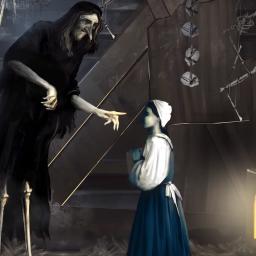How Mythological Monsters Define the Boundaries Between Good and Evil

Dr. Emily Zarkaof thePBSseriesMonstrum explored the role that monsters play in our lives, noting that these mythological creatures were often used to define the boundaries between good and evil or reflect fear. In this way, monsters, such as Krampus, dictated social behavior by encouraging people to be good, otherwise there would be a scary price to be paid.
Monsters serve as instructed metaphors o teach moral lessons or condemn and promote certain behaviors. ...While those horror movies and spooky stories by the fire aren't just there to scare us, they're trying to teach us something, about how to behave, what not to do, and who to trust.
Unfortunately, monsters are not always mythological. There are those who blame those they consider others" for their own faults or for the ills of society, thus perpetuating the monstrous cycle of hate.
Monster mythology isn't only about what's not human, but perhaps more crucially what it means to be accepted. ...Colonizers often labeled indigenous peoples as savages or beasts to diminish and other them. Still today, marginalized groups are labeled as monstrous for their differences, whether that's race, religion, gender, immigration, status, or sexuality. Monster continues to be used to justify discrimination and violence.
subscribe to the Laughing Squid Newsletter
The post How Mythological Monsters Define the Boundaries Between Good and Evil was originally published on Laughing Squid.